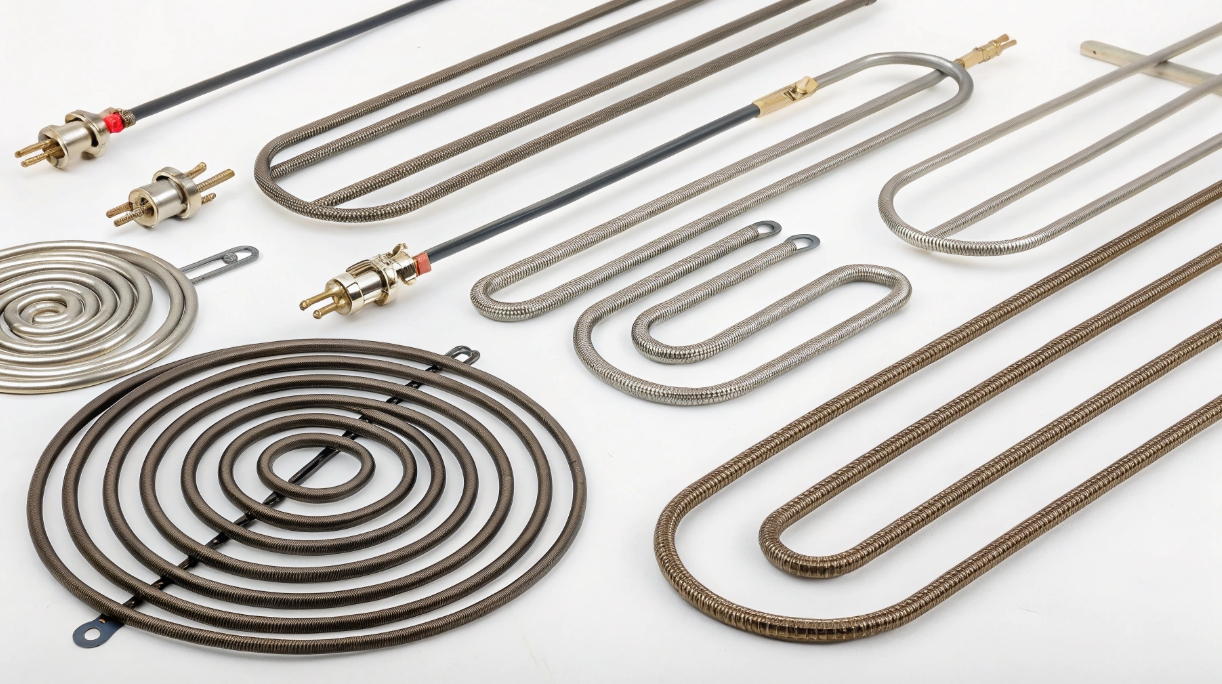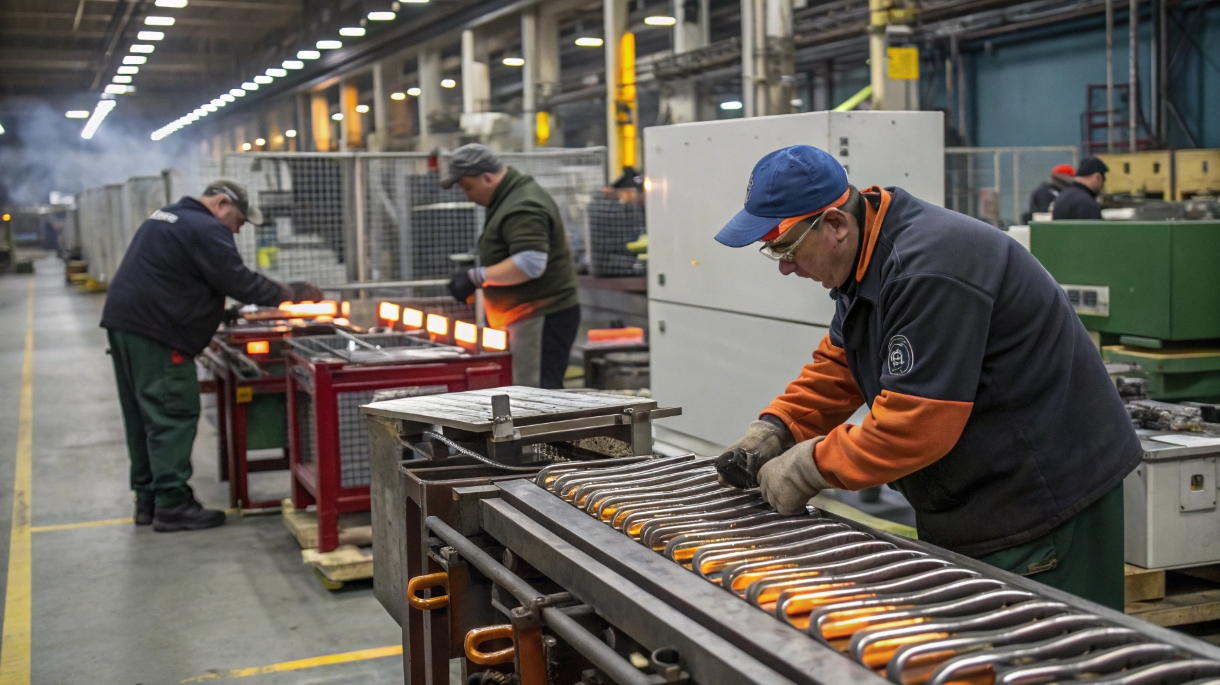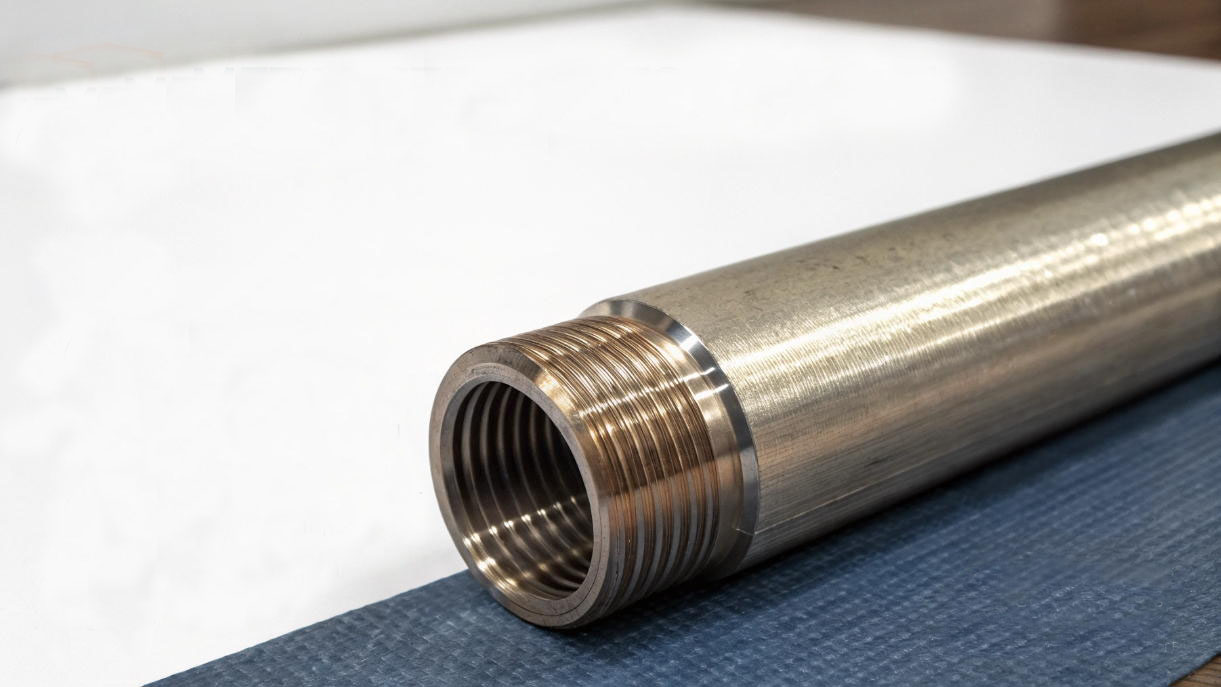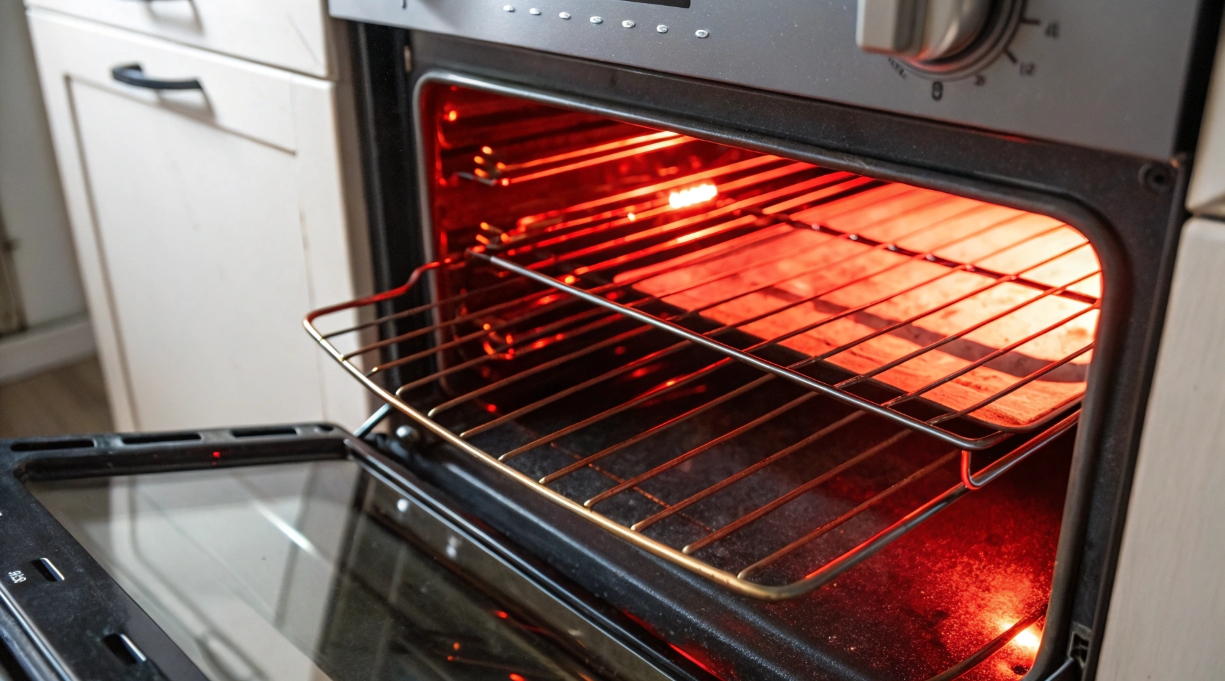Introduction
Heating elements are critical components in household ovens, ensuring uniform heat distribution and durability. This guide dives into the production process of oven heating elements (U-shaped, M-shaped, or circular types) and explores advanced metal sheath treatments like annealing, pickling, and passivation. Whether you’re a buyer, engineer, or industry enthusiast, this article will help you evaluate suppliers and understand quality benchmarks.
Part 1: Oven Heating Element Manufacturing Process
1. Raw Material Preparation
Key Materials:
- Sheath Tubing: Stainless steel (304/316/321), Incoloy, or copper.
- Heating Wire: NiCr (Nickel-Chromium) or FeCrAl (Iron-Chromium-Aluminum).
- Insulation: High-purity magnesium oxide (MgO).
- Sealing: Ceramic caps, silicone sealant, and high-temperature epoxy resin.
2. Resistance Wire Coiling
A CNC coiling machine winds the resistance wire into a spiral around a ceramic core. Precision ensures consistent resistance and heat output.
3. Sheath Assembly
The coiled wire is inserted into the metal sheath, supported by conductive rods and insulated ceramic spacers.
4. Magnesium Oxide Filling
MgO powder is vibrated into the sheath using high-frequency machines. This step is critical for electrical insulation and heat conductivity; gaps reduce efficiency and cause failures.
5. Tube Swaging/Rolling
The sheath is compressed (e.g., from Ø10mm to Ø6.6mm) via multi-stage rolling. This compacts MgO, eliminates voids, and enhances thermal transfer.
6. Bending & Shaping
CNC bending machines shape the tube into required forms (U-type, M-type, circular). Accuracy ensures seamless integration with oven cavities.
7. Welding & Terminal Installation
Terminals (Faston tabs, screw connectors) are welded, and ceramic caps or stainless steel junction boxes are added for safety.
8. Testing & Inspection
- Insulation Resistance: >1000MΩ.
- High-Voltage Test: 1800V for 1 minute (no breakdown).
- Power Accuracy: ±5%.
- Leakage Current: Within safety thresholds.
9. Sealing & Moisture Protection
High-temperature sealants prevent moisture ingress. Optional silicone sleeves or thermal fuses enhance safety.
10. Packaging
Each unit is individually wrapped with anti-static foam and boxed. Custom labeling or barcodes are added for traceability.
Part 2: Metal Sheath Treatments for Enhanced Performance
The metal sheath (stainless steel, Incoloy, or copper) determines heat transfer efficiency, corrosion resistance, and lifespan. Below are key pre/post-treatment processes:
① Annealing
- Purpose: Softens metal post-processing (e.g., rolling) to prevent cracking during bending.
- Process: Heated to 1050°C in a hydrogen furnace to remove stress.
- Materials: Essential for stainless steel (304/321) and Incoloy.
② Pickling
- Purpose: Removes oxides and contaminants using nitric/hydrofluoric acid.
- Results: Cleaner surfaces improve MgO filling and welding quality.
③ Sandblasting
- Purpose: Increases surface roughness for better grip in oven assemblies.
- Media: Aluminum oxide or glass beads.
④ Passivation
- Purpose: Boosts stainless steel’s corrosion resistance.
- Process: Treated with citric/nitric acid to form a protective oxide layer.
⑤ Electropolishing or Plating
- Electropolishing: Creates a smooth, aesthetic finish (premium ovens).
- Nickel/Tin Plating: For harsh environments (acidic/alkaline exposure).
⑥ Anti-Oxidation Coating
Prevents oxidation during storage. Common for copper to avoid green patina (verdigris).
Part 3: Surface Finishes Explained – Blackening, Bluing, and Greening
Blackening (Black Oxide)
- Application: Carbon steel/iron parts.
- Process: Forms Fe₃O₄ layer via alkaline oxidation.
- Benefits: Rust prevention + aesthetic matte black finish.
Bluing (Low-Temperature Oxidation)
- Application: Firearms or precision tools.
- Result: Dark blue finish with mild corrosion resistance.
Greening (Patina)
- Application: Decorative copper items.
- Process: Chemical oxidation to create antique green hues.
Quality Control Checklist for Heating Element Suppliers
| Key Process | Quality Indicators |
|---|---|
| MgO Filling | No voids, 1000MΩ+ insulation resistance |
| Bending Accuracy | ±0.5mm tolerance for oven cavity fitment |
| Welding | No cracks, secure terminals |
| Power Consistency | ±5% deviation during load testing |
FAQ Section
Q: Why is magnesium oxide used in heating elements?
A: MgO is non-conductive yet thermally conductive, making it ideal for insulation and heat transfer.
Q: What’s the purpose of passivation for stainless steel sheaths?
A: Passivation removes free iron and forms a chromium-rich layer, reducing corrosion in humid environments.
Q: Can copper heating elements develop green patina over time?
A: Yes, in humid conditions. Anti-oxidation coatings or nickel plating prevents this.
Conclusion
Understanding the oven heating element manufacturing process and metal sheath treatments helps in selecting reliable suppliers and ensuring product longevity. For manufacturers, optimizing processes like MgO compaction, precision bending, and passivation directly impacts performance.
Need an OEM/ODM partner for heating elements? Contact us for technical specs, custom designs, or a detailed production flowchart tailored to your needs!
engagement.





